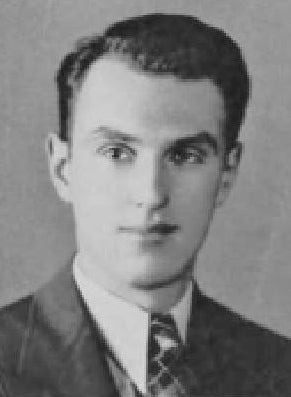- Private First Class
- WW II
Biography
David Efram Wells was born in Taunton, Massachusetts on 22 July 1915. He was the son of William and Ida Wells. He was a 1932 graduate of Taunton High School, Taunton, Massachusetts where he was an outstanding scholar. David entered Rhode Island State College (RISC) in September 1932 with the class of 1936, majoring in Business Administration. He was a member of Alpha Epsilon Pi Fraternity and a member of the Rhode Island College Players where he served as the Business Manager. He participated in the Army ROTC program for two years.
He enlisted in the U.S. Army on 22 September 1943 and was assigned to Camp Croft for Infantry training prior to joining the 135th Infantry Regiment, 34th Infantry Division. The 34th Infantry Division skipped the invasion of Sicily and instead trained intensively for the invasion of the Italian mainland, with the main landing being at Salerno on 9 September 1943. The 135th moved north under heavy enemy resistance and had been in Italy for a year. The units of the 135th were moving forward on 12 September 1944 toward Ciragnano in the face of stiff opposition. Enemy artillery fire was quite heavy, but this was countered effectively by fire from supporting artillery.
On 13 September 1944, it was learned from prisoners that the Regiment had encountered the outposts of the Gothic Line defended by units of the 4th German Paratroop Division. The fighting was extremely intense, and both sides suffered severe losses. Private First Class David Efram Wells was killed during the battle at the Gothic Line and Po Valley on 13 September 1944. He was awarded the Purple Heart Medal and the Combat Infantryman Badge. His body was returned to the United States for burial with full military honors in the Mt. Nebo Jewish Cemetery, Taunton, Massachusetts.
Private First Class David Efram Wells, U.S. Army was a son of Rhode Island State College who answered the call to service during World War II and gave his life in service to Rhode Island and America. He was a member of the “Greatest Generation.”
Education
1936

